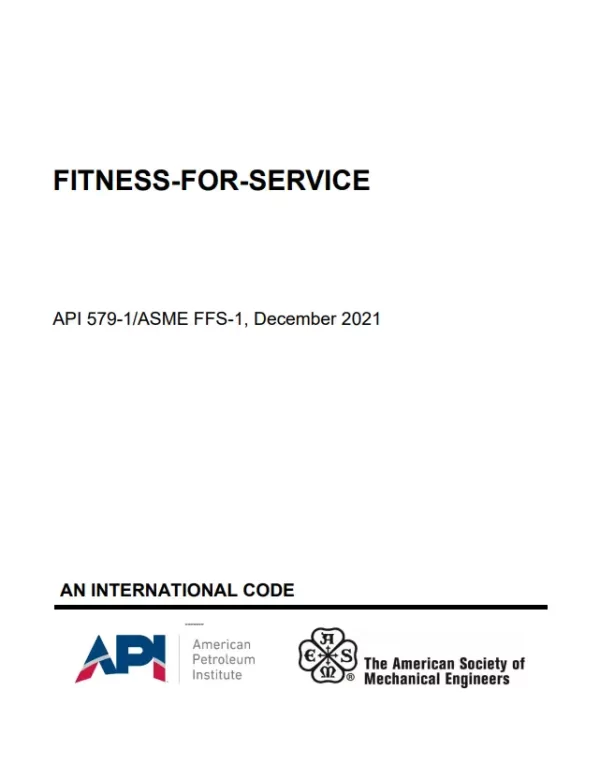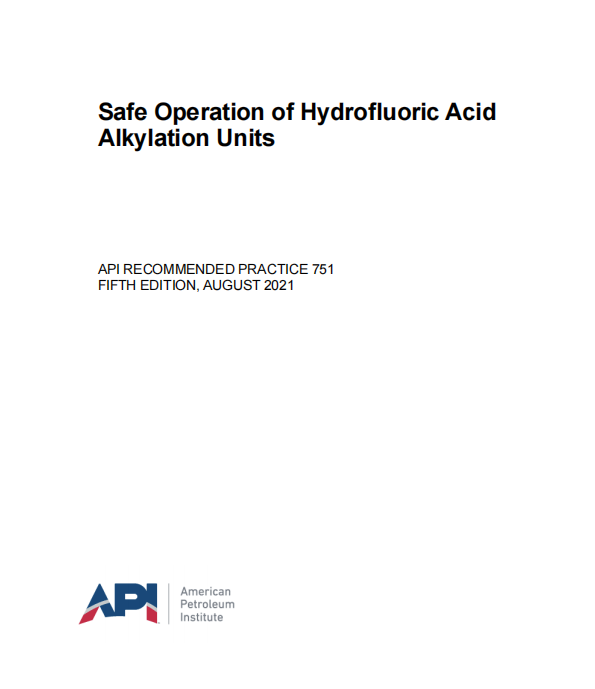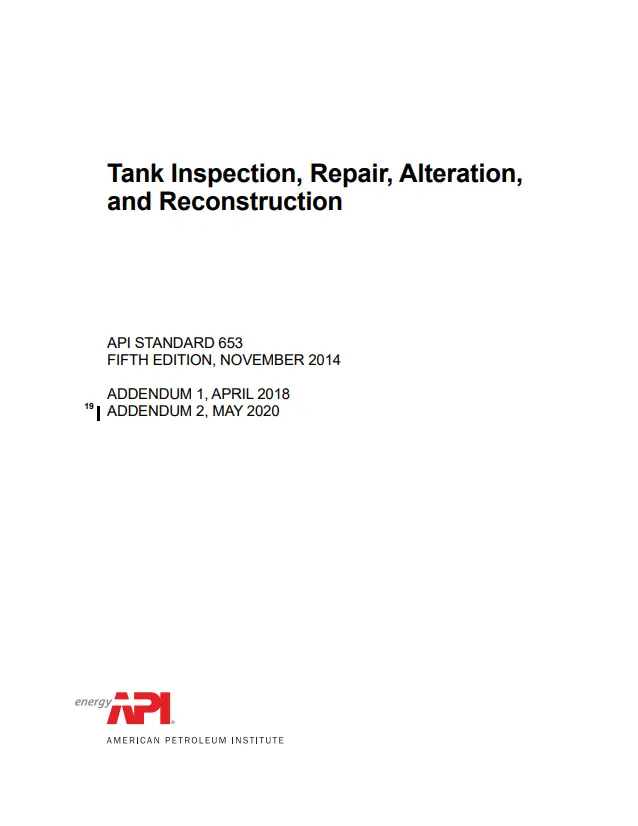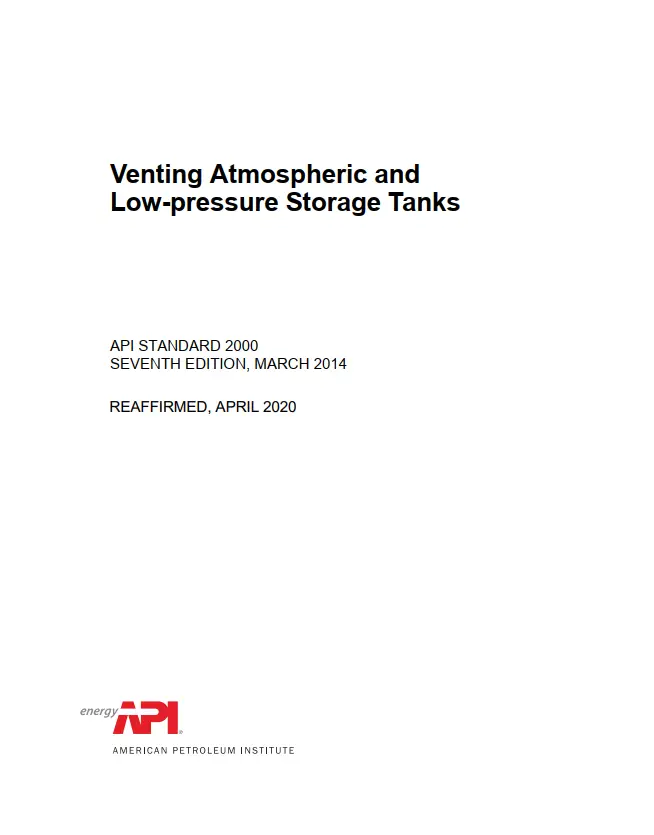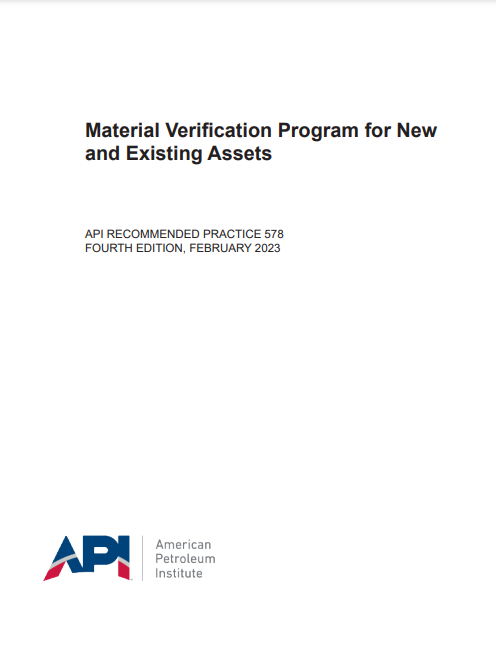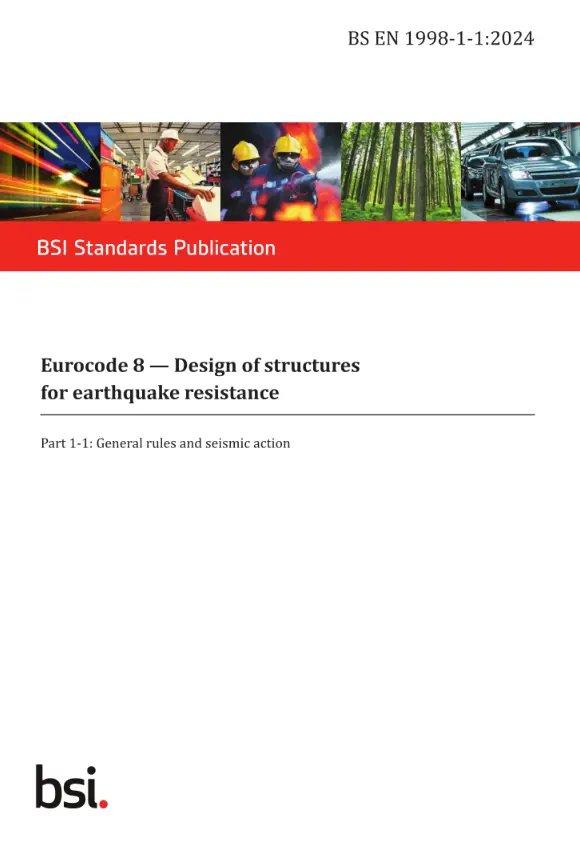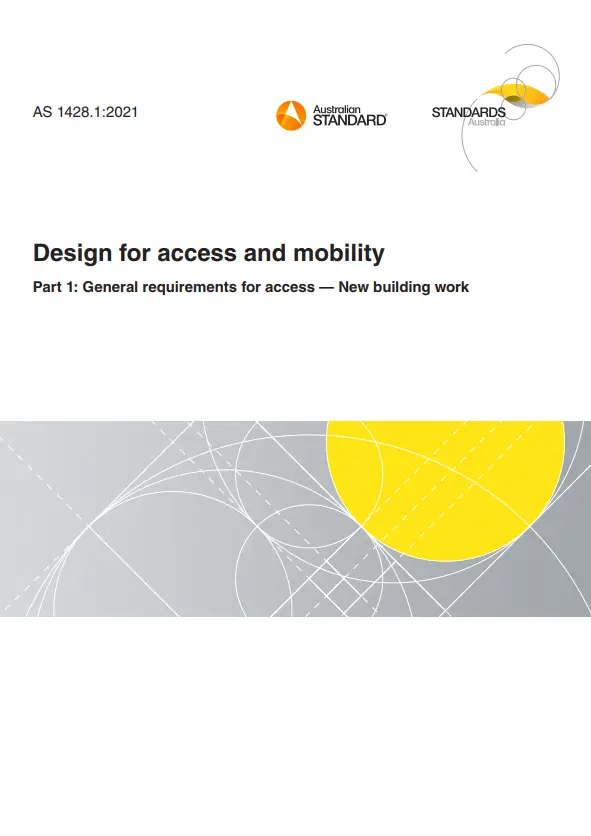API 579-1, 2021 Edition – Fitness-For-Service
The methods and procedures in this Standard are intended to supplement and augment the requirements in API 510, API 570, API 653, and other post construction codes that reference FFS evaluations such as NB-23.
Application Construction Codes
The assessment procedures in this Standard can be used for FFS Assessments and/or rerating of equipment designed and constructed to the following codes:
a) ASME BPV Code, Section VIII, Division 1
b) ASME BPV Code, Section VIII, Division 2
c) ASME BPV Code, Section I
d) ASME B31.1 Piping Code
e) ASME B31.3 Piping Code
f) ASME B31.4 Piping Code
g) ASME B31.8 Piping Code
h) ASME B31.12 Piping Code
i) API Std 650
j) API Std 620
k) API Std 530
Other Recognized Codes and Standards
The assessment procedures in this Standard may also be applied to pressure containing equipment constructed to other recognized codes and standards, including international and internal corporate standards. This Standard has broad applications since the assessment procedures are based on allowable stress methods and plastic collapse loads for non-crack-like flaws, and the Failure Assessment Diagram (FAD) Approach for crack-like flaws (see Part 2, paragraph 2.4.2).
a) If the procedures of this Standard are applied to pressure containing equipment not constructed to the codes listed in paragraph 1.2.2, then the user is advised to first review the validation discussion in Annexes 3A through 14A. The information in these Annexes, along with knowledge of the differences in design codes, should enable the user to factor, scale, or adjust the acceptance limits of this Standard such that equivalent FFS in-service margins can be attained for equipment not constructed to these codes. When evaluating other codes and standards, the following attributes of the ASME and API design codes should be considered:
1) Material specifications
2) Upper and lower temperature limits for specific materials
3) Material strength properties and the design allowable stress basis
4) Material fracture toughness requirements
5) Design rules for shell sections
6) Design rules for shell discontinuities such as nozzles and conical transitions
7) Design requirements for cyclic loads
8) Design requirements for operation in the creep range
9) Weld joint efficiency or quality factors
10) Fabrication details and quality of workmanship
11) Inspection requirements, particularly for welded joints
b) As an alternative, users may elect to correlate the pressure-containing component’s material specification to an equivalent ASME, or API listed material specification to determine a comparable allowable stress. This approach provides an entry point into the ASME or API codes wherein the pressure-containing component is reconciled or generally made equivalent to the design bases assumed for this Standard (see Annex 2C, paragraph 2C.1.3). Hence, general equivalence is established, and the user may then directly apply the acceptance limits of the FFS procedures contained in this Standard. Equivalent ASME and ASTM material specifications provide a satisfactory means for initiating reconciliation between the ASME and API design codes and other codes and standards. However, the user is cautioned to also consider the effects of fabrication and inspection requirements on the design basis (e.g., joint efficiency with respect to minimum thickness calculation).
Remaining Life
The FFS Assessment procedures in this Standard cover both the present integrity of the component given a current state of damage and the projected remaining life. Qualitative and quantitative guidance for establishing remaining life and in-service margins for continued operation of equipment are provided in regards to future operating conditions and environmental compatibility.
Assessment Methods for Flaw Types and Damage Conditions
Assessment methods as well as material properties, Nondestructive Examination (NDE) guidelines, and documentation requirements are included to evaluate flaws including: general and localized corrosion, widespread and localized pitting, blisters and hydrogen damage, weld misalignment and shell distortions, crack-like flaws including environmental cracking, laminations, dents, and gouges. In addition, evaluation techniques are provided for condition assessment of equipment including resistance to brittle fracture, creep damage, and fire damage.
Special Cases
The FFS Assessment procedures in this Standard can be used to evaluate flaws commonly encountered in pressure vessels, piping, and tankage. The procedures are not intended to provide a definitive guideline for every possible situation that may be encountered. However, flexibility is provided to the user in the form of an advanced assessment level to handle uncommon situations that may require a more detailed analysis.
General Product Information:
| Revision | 2021 Edition |
| Document Type | |
| Pages | 1478 |
| Document Language | English |
| Publisher | American Petroleum Institute (API) |
| Status | Current |

